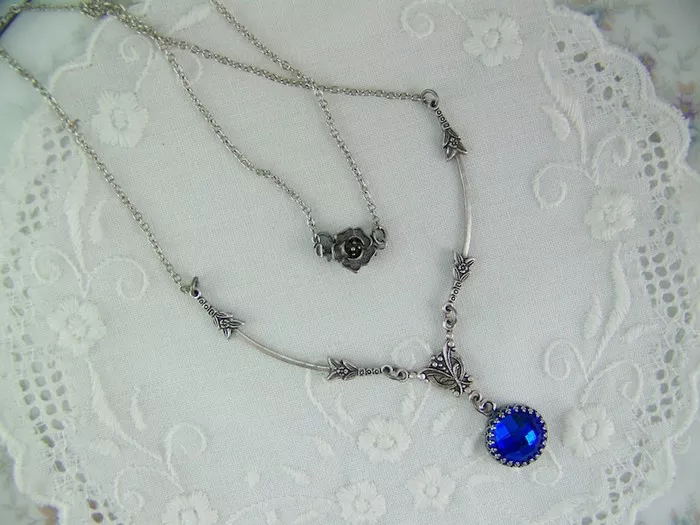Gemstones have long adorned jewelry with their timeless elegance and beauty, captivating enthusiasts and collectors alike. Among the plethora of gemstones available, emeralds and sapphires stand out for their allure and prestige. However, a common query persists: is emerald more expensive than sapphire? To discern this, it’s imperative to delve into various aspects including their characteristics, market dynamics, investment potential, and purchasing considerations.
Exploring Emeralds and Sapphires: A Gemological Insight
Emeralds, renowned for their lush green hue, belong to the beryl family, alongside aquamarine and morganite. Their captivating color comes from trace amounts of chromium and vanadium within the crystal structure. Conversely, sapphires, a variant of the mineral corundum, come in a spectrum of colors, with the classic blue being the most coveted. Sapphires owe their hues to elements like iron and titanium, with blue sapphires being particularly prized.
Both emeralds and sapphires have historical significance, adorning royal jewels and ceremonial artifacts throughout the ages. Emeralds were cherished by ancient civilizations like the Incas and Egyptians, believed to symbolize rebirth and fertility. Sapphires, on the other hand, have been revered for their celestial blue shade, often associated with wisdom, virtue, and royalty.
Deciphering Gemstone Value: Factors Influencing Price
The value of emeralds and sapphires is contingent on several intrinsic and extrinsic factors. Rarity plays a pivotal role, with certain hues and qualities being scarcer than others. In emeralds, the intensity and saturation of green, coupled with clarity, significantly influence price. Sapphires, meanwhile, are valued based on color purity, clarity, and brilliance, with the most prized being the vivid blue “cornflower” hue with minimal inclusions.
The cut of the gemstone also impacts its value, with precision cuts enhancing brilliance and allure. Carat weight is another determinant, although it’s often secondary to color and clarity. In both cases, natural untreated stones command higher prices due to their rarity and purity.
Price Analysis: Contrasting the Cost
Comparing the prices of emeralds and sapphires reveals nuances influenced by market demand, availability, and gemstone quality. Generally, emeralds tend to be more expensive than sapphires of comparable quality, primarily due to their rarity and the challenges in sourcing stones with desirable color and clarity. On average, a one-carat emerald of good quality can range from $1,000 to $10,000, while a similarly sized sapphire might range from $500 to $5,000.
However, it’s essential to note that within each category, prices can vary significantly based on factors like origin, treatment, and market trends. For instance, emeralds from Colombia are highly prized for their intense green color, commanding premium prices, whereas sapphires from Kashmir are renowned for their velvety blue hue and can fetch astronomical sums at auctions.
Market Dynamics: Trends Shaping Gemstone Prices
Market trends exert a profound influence on the pricing dynamics of emeralds and sapphires. Fluctuations in consumer preferences, geopolitical factors, and economic conditions can drive shifts in demand and supply, consequently impacting prices. In recent years, a growing interest in ethically sourced and sustainable gemstones has influenced consumer behavior, with responsibly mined emeralds and sapphires gaining traction in the market.
Moreover, emerging economies with burgeoning middle-class populations have contributed to increased demand for luxury goods, including gemstone jewelry, thereby driving prices upwards. Technological advancements in gemstone mining and processing have also influenced market dynamics, enabling the discovery of new deposits and enhancing the quality of extracted stones.
Gemstone Investments: Analyzing Long-term Potential
Investing in gemstones like emeralds and sapphires entails careful consideration of various factors, including market trends, rarity, and intrinsic value. Historically, both gemstones have demonstrated resilience as investment assets, appreciating steadily over time. However, their illiquid nature and subjective valuation pose challenges for investors seeking short-term gains.
Emeralds, with their limited geographical distribution and vulnerability to treatments, offer potential for substantial appreciation, particularly for rare specimens with exceptional color and clarity. Sapphires, meanwhile, benefit from a broader color spectrum and widespread availability, albeit with variations in quality and value.
Preserving Value: Care and Maintenance Guidelines
Maintaining the allure and value of emeralds and sapphires requires proper care and maintenance. Due to their relatively high hardness (7.5-8 on the Mohs scale for emeralds and 9 for sapphires), both gemstones are durable and resistant to scratches, making them suitable for everyday wear. However, they are not impervious to damage and require gentle handling to prevent chipping or fracturing.
Regular cleaning with mild detergent and warm water, coupled with gentle brushing using a soft toothbrush, helps remove dirt and oils accumulated on the gemstone’s surface. Avoid exposing emeralds and sapphires to harsh chemicals or ultrasonic cleaners, as these can damage the gemstone or alter its appearance.
Smart Shopping: Tips for Acquiring Gemstone Treasures
When purchasing emeralds or sapphires, discerning buyers should exercise due diligence to ensure they acquire authentic, high-quality gemstones. Look for reputable jewelers or dealers with a proven track record of ethical sourcing and transparent business practices. Additionally, insist on certifications from reputable gemological laboratories like GIA (Gemological Institute of America) or AGS (American Gem Society) to verify the authenticity and quality of the gemstone.
Consider factors such as origin, treatment history, and documentation when evaluating gemstones, as these can significantly impact their value and desirability. Inspect the gemstone under magnification to assess its clarity and look for any signs of treatments or enhancements. Lastly, trust your instincts and choose a gemstone that resonates with your preferences and style, ensuring it becomes a cherished heirloom for generations to come.
In conclusion, while emeralds and sapphires each possess their unique allure and charm, determining which is more expensive requires a nuanced understanding of their intrinsic qualities, market dynamics, and investment potential. Whether you’re captivated by the verdant allure of emeralds or the celestial beauty of sapphires, investing in these timeless treasures can be a rewarding endeavor for both connoisseurs and investors alike.

